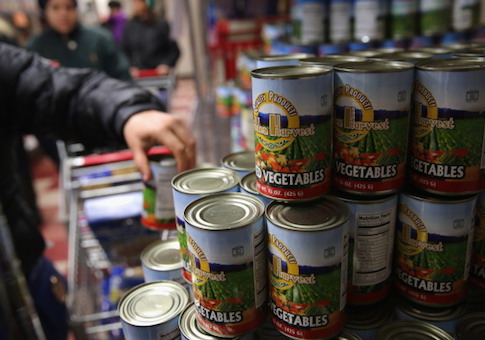A federal farm bill that would have stiffened work requirements on those receiving nutritional help was defeated earlier this month, even as new research argued such requirements would help free aid recipients from government dependency.
Members of the House of Representatives voted down the 2018 Agriculture and Nutrition Act, which contained more than $800 billion in spending as well as stricter work requirements on those receiving benefits from the Supplemental Nutrition Assistance Program (SNAP).
A new report from the Foundation for Government Accountability argues that such work requirements are justified and that states have been abusing the current system by seeking waivers from the requirements.
"The U.S. economy is booming, yet more than a third of the country still lives in an area where able-bodied adults are exempt from food stamp [work] requirements," the report says. Such aid is intended as temporary help during economic downturns, according to the study.
Federal rules allow states to use outdated unemployment data to justify waivers, said Sam Adolphsen, a senior fellow with the foundation and an author of the May 9 report. They also allow states to gain waivers if regions of the state have jobless rates 20 percent above the national average, Adolphsen said.
"The Trump administration can undo most of this abuse with rulemaking, and fortunately they have taken initial steps toward doing that," he told Watchdog.org.
California, despite its record-low unemployment rate, obtained a waiver from SNAP work requirements that covers the entire state using four-year-old economic data, according to Adolphsen. And Illinois’s waiver covers every county in the state except DuPage, even though Washington County has a jobless rate of 2.6 percent, and jobless rates for 14 Illinois counties have dropped to under 4 percent, according to the FGA report.
"There are 33 states that have statewide or partial waivers," Adolphsen said.
The rules should be changed so that waivers cover more targeted areas that have high unemployment, he said, and states should not be allowed to gerrymander waiver areas and average county jobless data.
"We encourage them to get rid of the criteria of being slightly above the national average or go to more fixed criteria," Adolphsen said. Under the current system, if the U.S. unemployment average were 1 percent, a state could qualify for a waiver for work requirements if its jobless rate were 1.2 percent, he said.
Critics have said that tougher work provisions would require more government bureaucracy to better track aid recipients, but Adolphsen rejects that notion. When he ran the food stamp program in Maine, the process the state used to reinstate work requirements was straightforward, Adolphsen said.
"It was not an administrative challenge whatsoever …" he said, adding that most recipients were able to drop out of the program and make more money in the workforce. "It’s administrative relief when people leave the program and go back to work."
Federal officials need put a stop to work requirement waivers soon to avoid another round of them taking effect in 2019, Adolphsen said.
"There’s some urgency around this from a Trump administration perspective …" he said. "They really need to move quickly on these to make the necessary changes and stop the abuse."
But critics of the work requirements, including Ed Bolen, a senior policy analyst with the Center on Budget and Policy Priorities, say the requirement to create work programs for able-bodied adults without dependents (ABAWDs) receiving food assistance will sap public resources.
"The U.S. Department of Agriculture inspector general’s report on implementing the existing rule noted multiple times that the rule was hard to implement," Bolen told Watchdog.org in an email. State officials have expressed concerns that such requirements are error-prone and take excessive time to execute, he said.
SNAP caseloads have been dropping in recent years due to an improving economy, he said, but there are reasons the decrease has not been more pronounced.
"One factor that affects caseload levels is the number of eligible persons – that’s always been based on income, not employment, so even with a low unemployment rate, many people may have income low enough to qualify for SNAP," Bolen said.
Rachel West, director of poverty research with the Center for American Progress, challenges studies that have shown work requirements benefited welfare recipients in Maine and Kansas. Those studies contained design flaws, West said.
"The Center on Budget and Policy Priorities took a close look at these studies and pointed out a number of other flaws," she told Watchdog.org in an email, "including the finding that the Kansas study claims that participants’ incomes were 127 percent higher after the cut-off, when in fact their total resources were 3 percent lower."
Work requirements also tend to thrust aid recipients into low-wage jobs with variable hours and forces them to cope with factors such as expensive child care and transportation issues, West said.
"Research shows work requirements don’t increase employment in the long run," she said. "They don’t increase earnings, and they don’t cut poverty."
West also said it wasn’t unusual that SNAP participation levels have not dropped more than they have in recent years.
"In the slow recovery from that recession – which was characterized by the creation of low-wage, low-quality jobs, underemployment and folks dropping out of the labor force due to lack of opportunity – it wasn’t surprising that caseloads continued to grow for a few years as families got the benefits they were eligible for and got back on their feet," she said.
